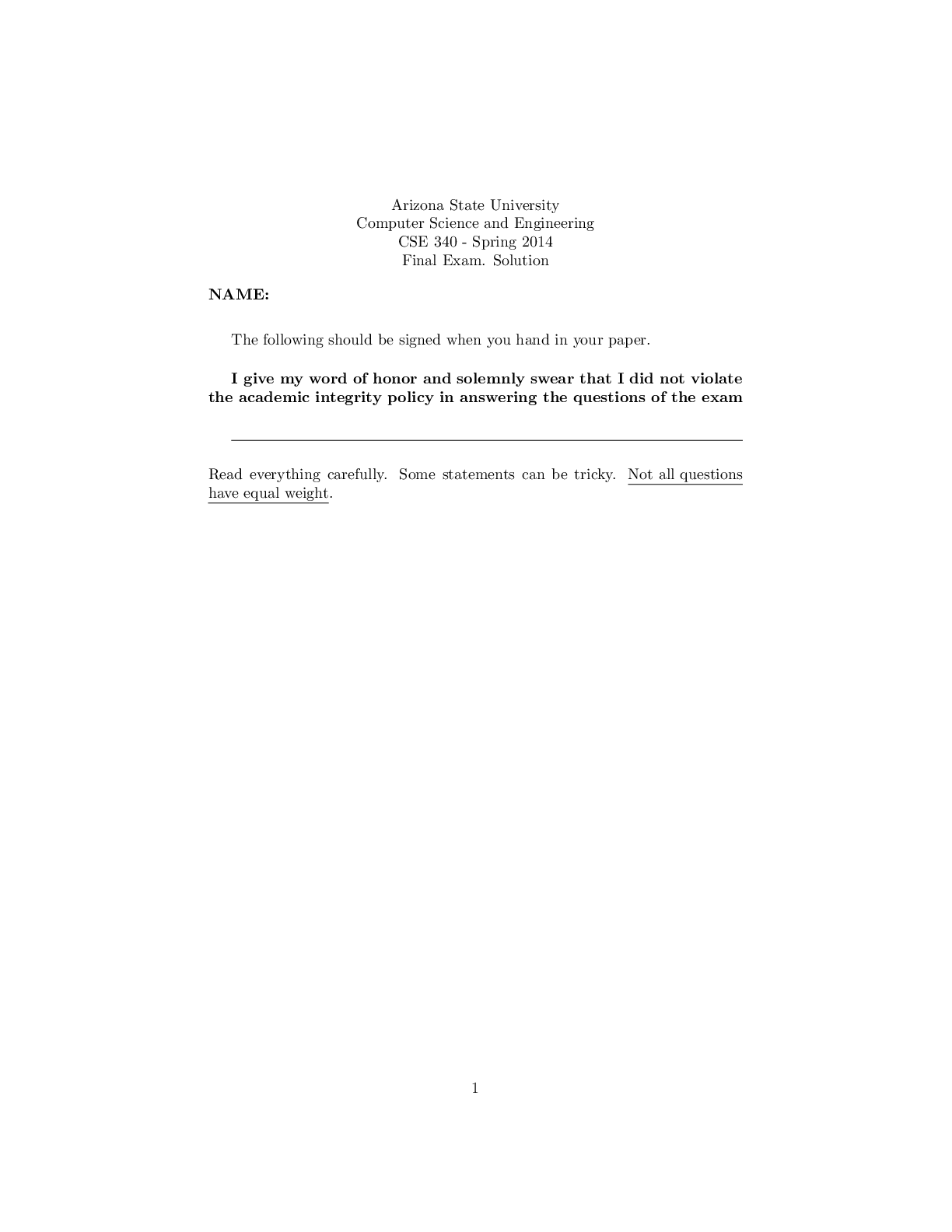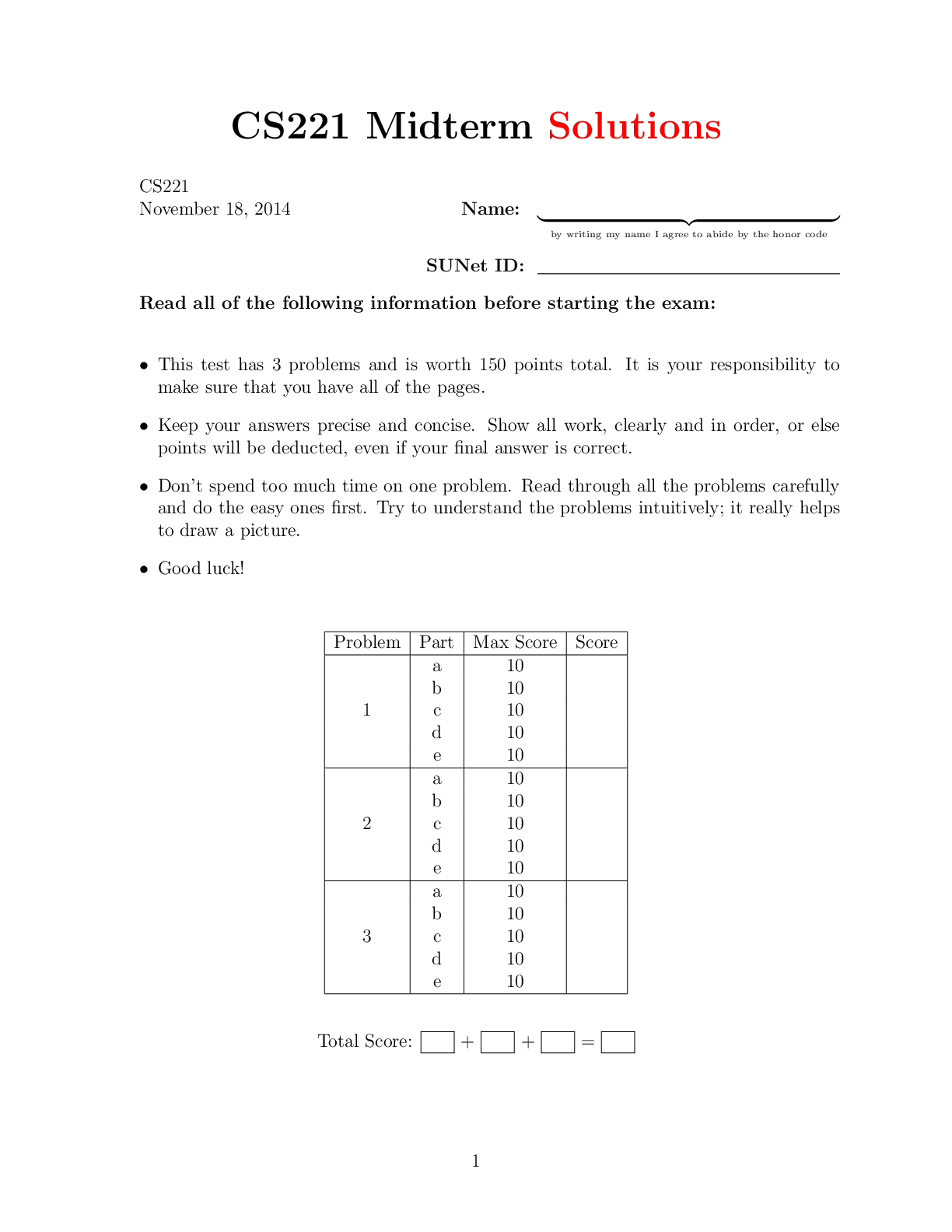Engineering > EXAM REVIEW > University of Waterloo ECE 358 lcblcblcb (All)
University of Waterloo ECE 358 lcblcblcb
Document Content and Description Below
Department of Electrical and Computer Engineering ECE 358 – Computer Networks Midterm Exam + Solution Winter 2019 February 28, 2019 8:30 - 9:45 AM Instructors: Sagar Naik Time Allowed: 75 Minu... tes Albert Wasef First Name: Last Name: I.D. Number: Circle Your Section: Sec. 1 (Naik/Afternoon) Sec. 2 (Wasef/Morning) Instructions: 1. This exam has 12 pages including this cover. Keep all sheets stapled. 2. The is a closed book examination; no notes are to be used. 3. Calculators with cleared memory are allowed. 4. Place your WATCARD on the table and sign the attendance sheet when provided. 5. Answer all questions. Clearly show all steps used in the solution process. No marks will be given for numerical results unless accompanied by a correct solution method. 6. Should there be a need, make reasonable assumptions, write them down in your exam paper and proceed. 7. Giga means 10#, “Mega” means 10$, and “Kilo” means 10&. 8. All acronyms have their standard expansions as explained in class. Question Marks Marker 1 /30 MB/ KT 2 /20 MB 3 /20 JL/ AA 4 /30 AS/ JL Total /100 You may use the backsides of all the facing pages for rough works. ECE 358 Midterm Exam – Winter 2019 2 /11 Question 1 [30 Marks]: Concepts Briefly answer the following questions. (a) List the four broad kinds of delays encountered by IP packets while moving from router to router. Out of the four kinds of packet delays, what are mostly deterministic and what are highly variable for MTU (Max Transfer Unit) size packets? (4 marks) Propagation delay: This varies based on the length of the medium. Transmission delay: This is fixed for a given MTU and link speed. Queuing delay: This is highly variable as it depends upon the queue length. Processing delay: This is largely fixed for a given router. (b) Why are correctly received data packets occasionally dropped by routers? (1 mark) Routers drop correctly received data packets when the input buffer for the link is full. (c) Why is collision detected while transmitting in the CSMA/CD protocol? (1 marks) In the CSMA/CD protocol a transmitter detects collision while transmitting a frame, because if the frame collides with another frame, then the transmitter aborts the transmission to make the channel free for a sooner subsequent transmission. (d) What are throughput, instantaneous throughput, and average throughput? (4 marks) Throughput: It is the rate at which bits are moved from a sender to a receiver. Instantaneous throughput: It is the throughput calculated over a very short duration. Average throughput: It is the throughput calculated over a very long period of time [Show More]
Last updated: 2 years ago
Preview 1 out of 11 pages

Buy this document to get the full access instantly
Instant Download Access after purchase
Buy NowInstant download
We Accept:

Reviews( 0 )
$5.50
Can't find what you want? Try our AI powered Search
Document information
Connected school, study & course
About the document
Uploaded On
Nov 08, 2022
Number of pages
11
Written in
Additional information
This document has been written for:
Uploaded
Nov 08, 2022
Downloads
0
Views
100






.png)






.png)
.png)

